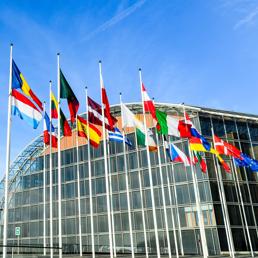Ten year after the first rumbles became audible of what would become the Great Recession, we decided it was the right time to discuss the world and Italy, and both together.
We started by asking ourselves a question: why has the world begun to grow again, albeit some places faster than others, while Italy, at most, is trudging along?
“A gazelle and a sloth” is how Paolo Bricco describes it, referring to the dynamism of our export-oriented manufacturing and service companies (although not all of them— some faltered under the recession, others surrendered, or failed or fell behind) and the sluggishness of a national system that smothers productivity and investment under the weight of bureaucratic-political burdens, a thousand technical and management incompetencies, and embedded corruption.
Our eyes are open. The picture of the Italy of today is a nation with a productivity of 100 points, identical to the OCED/Istat index of 2008, while the US is almost at 108 points, France at 106, Germany at 105.
The divergence is productivity has expanded even more. The recovery of investment in Italy (up 1.2% and 1.8% respectively in 2015 and 2016) falls short of corresponding growth in the Eurozone of 3%, and a anticipated 5.3% in the US in 2018. And it comes after a vertical drop in investment at the height of the crisis.
These are the numbers that measure the efficiency of action taken by governments past and present and of the entire national system of companies, banks and unions. Everyone must do more and bet with intelligence on a series of factors: removing obstacles to competition and productive public and private spending; ensuring a favorable fiscal environment that encourages research and innovation in Made in Italy, that gazelle that still stays strong; tackling widespread social unease and the structural gap between the North and South of the country that has continued to increase.
It requires a realistic view of our situation, an understanding of the problems, an ongoing strategic, reformist plan and a well-functioning executive. We need to do this, with or without so-called populism, ten years after the crisis.
It might help to compare the two Italys and the two Germanys before and after the crisis. The two most important manufacturing powers in Europe. And to compare the vices and virtues of France’s state/financial industry with Made in Italy and Italian finance, the duel between the US and Europe over public investment and our debt, industrial competition—in high tech and hand-made—between China and Italy, and so forth.
These are steps of a journey that Il Sole 24 Ore begins today to try to help us and our readers clear up our mind and understand the importance and quality of the challenges ahead.
But there’s one external challenge that concerns relations between Italy and the Franco-German club in the European banking sector and which comes before everything and cannot be subject to compromises because of political mistakes (the scarce weight of the EU and the “referendum suicide of the former Renzi government”) and the technical and negotiating weakness from which we have too slowly emerged.
We have reported on the abnormal difference between Level 3 assets (derivatives and complex securities without a market price and a mechanism to determine it) in the balance sheets of French and German banks compared to those of Italian lenders, while the regulators at the European Central Bank continue to call for the recapitalization of Italian banks using the almost exclusive parameter of non-performing loans, and ignoring the importance of this sort of “Zombie bank,” which has hard-to-value illiquid assets sitting inside the stomachs of French and German banking giants.
The Glaser report and from other researchers on 737 US and European banks indicates that a one point rise in the so-called standard deviation of the share of Level 3 assets increases the possibility of default by around 12%. How can [the Chair of the Supervisory Board of the ECB, Daniele] Nouy ignore all this? How can Europe continue to look the other way? Why were Spanish banks allowed to buy property assets given as collateral by their clients with impaired loans, consider them as repossessed assets and reduce their NPL, while in Italy, in an increasingly opaque situation, we risk to pay an even higher price than our mistakes impose?
The path toward the temporary nationalization of Monte dei Paschi di Siena is full of pitfalls, but these can be overcome. The road to the record capital increase started by UniCredit yesterday reflects the size and ambition of a big international bank, the purchase by UBI Banca in the three good banks (Marche, Chieti, Etruria) opens positive market scenarios to be watched closely.
However, if we want to free the gazelle from the sloth, we must speak the truth at home while insisting, in Europe, that rules apply to everyone. While the others have more or less emerged from the tunnel of the Great Crisis, we are on a more delicate edge and we cannot afford the “luxury” of continuing to “walk” while the others have started to run.
© ITALY EUROPE 24 – ALL RIGHTS RESERVED

